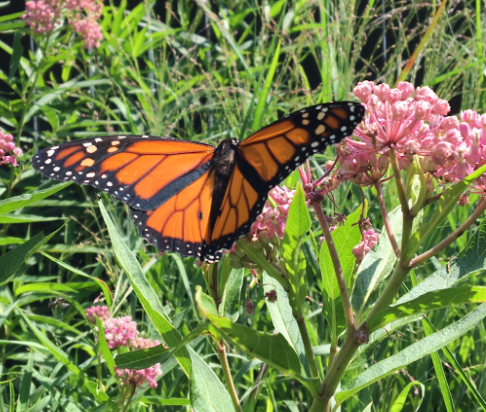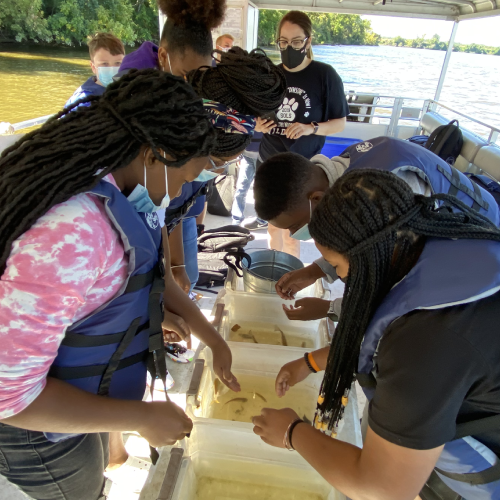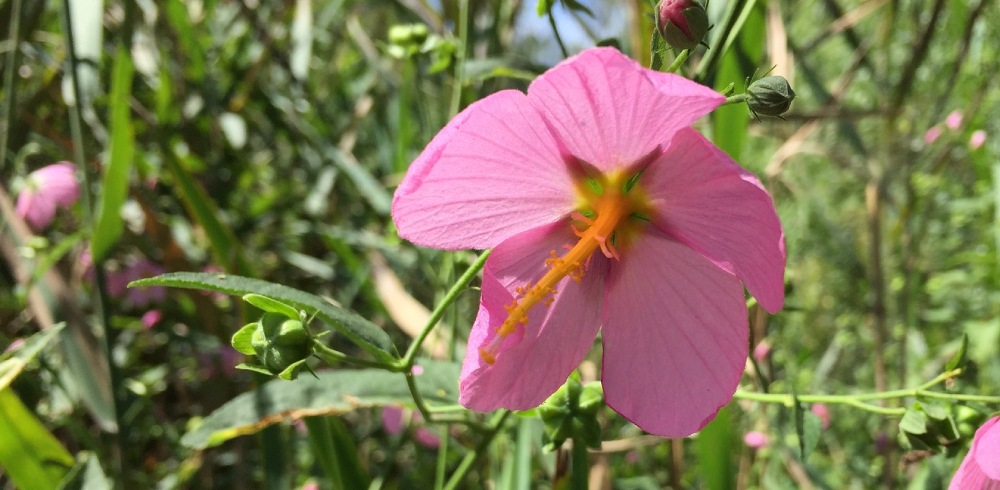“All that you touch, you change, All that you change changes you.” ~Octavia Butler~
 This spring, take action to protect your watershed. Spring is a time of refocusing and appreciating the little things, which often prove to be some of the biggest. I want to share a few easy ways you can improve and protect your watershed this spring. In the micro, try Native Gardening, in which choosing native plants is crucial. They adapt to the local climate and soil conditions where they naturally occur. These vital plant species provide nectar, pollen, and seeds that serve as food for native butterflies, insects, birds, and other animals.
This spring, take action to protect your watershed. Spring is a time of refocusing and appreciating the little things, which often prove to be some of the biggest. I want to share a few easy ways you can improve and protect your watershed this spring. In the micro, try Native Gardening, in which choosing native plants is crucial. They adapt to the local climate and soil conditions where they naturally occur. These vital plant species provide nectar, pollen, and seeds that serve as food for native butterflies, insects, birds, and other animals.
The James River Association (JRA) knows the watershed has issues from human interaction—including waste disposal and urban sprawl; fertilization of lawns, golf courses, fields, and crops; as well as litter and paved surfaces—which can create pollution in the form of runoff into the James River, and other rivers that ultimately empty into the Chesapeake Bay. Native gardening does not require fertilizers and requires fewer pesticides than lawns. Further, let us not forget that native plants require less water than lawns and help prevent erosion. JRA has set strategic goals for our efforts to achieve a fully healthy James River. We are helping communities realize the benefits of a healthy James River and support protecting it. In the James River watershed, we recognize the benefits of a healthy James River because it is the source of drinking water for 2.7 million people.
 In the macro, support JRA‘s educational efforts. Our team in the watershed educates roughly 14,000 students from the headwaters down. Many notable organizations support our meaningful work. To advance our impact, JRA needs countless supporting partners—school systems, national organizations, and foundations. Nothing conveys support better than a school system adding our educational programs to their annual budgets.
In the macro, support JRA‘s educational efforts. Our team in the watershed educates roughly 14,000 students from the headwaters down. Many notable organizations support our meaningful work. To advance our impact, JRA needs countless supporting partners—school systems, national organizations, and foundations. Nothing conveys support better than a school system adding our educational programs to their annual budgets.
At the national level, the National Oceanic and Atmospheric Administration (NOAA) funds our projects to educate and inspire students in three key communities in the James River watershed: Amherst County in the Upper James, Hopewell in the Middle James, and Surry in the Lower James. Through our meaningful watershed educational experience, we can bridge ecosystem stewardship and increase resilience to environmental hazards. JRA’s educational programs play a critical role in achieving NOAA’s vision. Who could predict that JRA would educate thousands of students in the Upper James watershed in 2015? And this number has only grown. JRA and the Upper James education team could not grow our reach without unique foundations like Greater Lynchburg Community Foundation. JRA obliges with its principal mission to enhance the quality of life in the communities of the City of Lynchburg, Amherst, Appomattox, Bedford, and Campbell. Now, just eight years later, our Upper James education team is educating these counties and beyond.
 Now encompass the macro and micro paddling of the James River to see the beauty for yourself. People make music and movies about it. The time for you to experience America’s River is now. I should not have favorites, but my favorite stretch is the Upper James River. It begins in the mountains at the confluence of the Cowpasture and Jackson Rivers in Botetourt County. The upper section of the James River is very scenic, with stunning Blue Ridge mountain views. The first 60 miles contain only class I or II rapids, making it ideal for canoe or kayak trips at normal water levels. The white water section of Balcony Falls below Glasgow includes a class III section for those interested in more technical water. The James is 340 miles long, and it is fed by 25,000 miles of tributaries. Always keep paddling safety and environmental hazards at the forefront. Then, gain the ability to effectively maneuver your craft and find a place to paddle on the James.
Now encompass the macro and micro paddling of the James River to see the beauty for yourself. People make music and movies about it. The time for you to experience America’s River is now. I should not have favorites, but my favorite stretch is the Upper James River. It begins in the mountains at the confluence of the Cowpasture and Jackson Rivers in Botetourt County. The upper section of the James River is very scenic, with stunning Blue Ridge mountain views. The first 60 miles contain only class I or II rapids, making it ideal for canoe or kayak trips at normal water levels. The white water section of Balcony Falls below Glasgow includes a class III section for those interested in more technical water. The James is 340 miles long, and it is fed by 25,000 miles of tributaries. Always keep paddling safety and environmental hazards at the forefront. Then, gain the ability to effectively maneuver your craft and find a place to paddle on the James.
River On!

